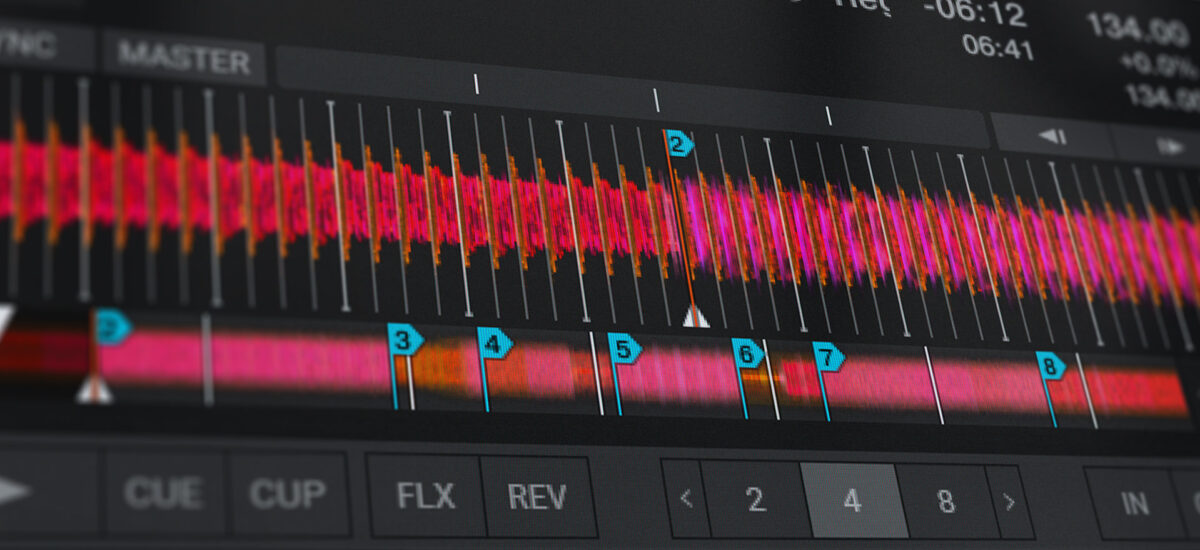
DJ cue points are amazingly simple yet powerful tools for executing better mixes. Cue points are distinct markers placed on tracks in a digital music collection that make it easy to instantly navigate to a particular section of the song. Cue points are placed on tracks during set preparation and are helpful for planning sets and mixes.
In this tutorial, learn about what cue points are, how to set cue points in Traktor, and where to set cue points on your tracks. No matter what genre you play, using cue points will streamline the organizational aspects of mixing and release artistic potential in your mixes.
Jump to these sections:
Follow along with this tutorial using Traktor Pro, the industry-leading DJ software that you can mix with up to four decks.
What are cue points in DJing?
Cue points are markers that DJs place on tracks in their collection that make it easy to go back to that precise moment. They’re a visual guide set on the track and each cue point corresponds to a number. When a cue point number is pressed in Traktor, the track returns to the exact place in the track it’s set on.
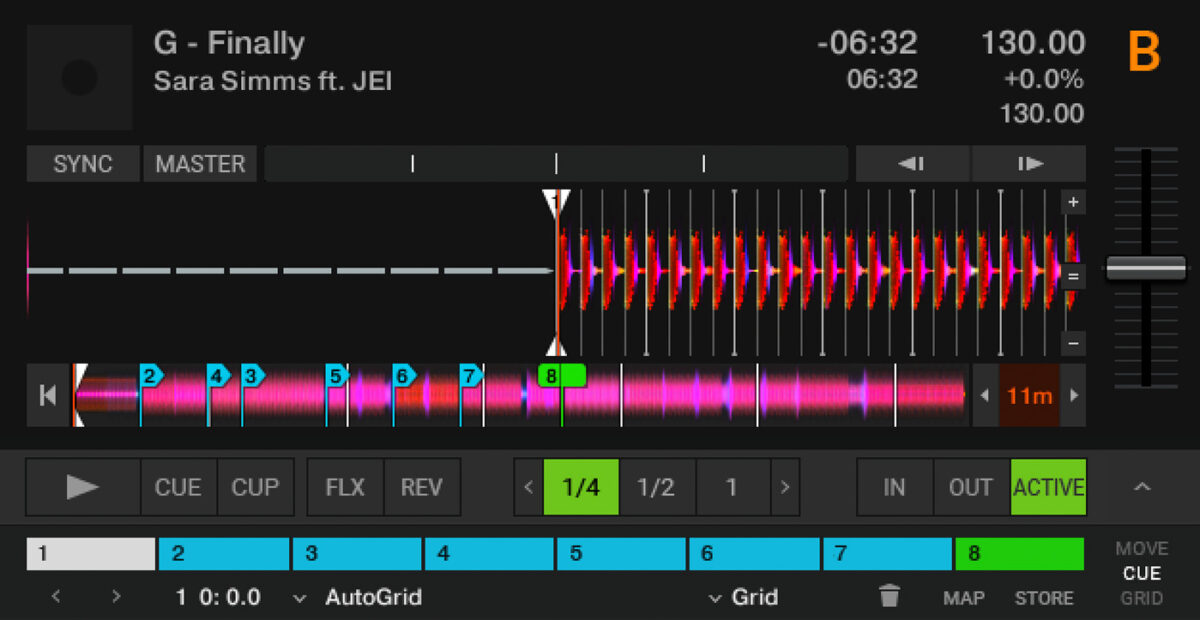
When a track is loaded in a Deck in Traktor, a cue point is automatically set on Cue Point one. This cue point is also the Beat Grid of the track and appears as white button. Traktor gives you the ability to set up to eight cue points on a track, and all of the remaining cue points are blue.
To delete a cue point, simply click on it, then click on the Trash Can icon.
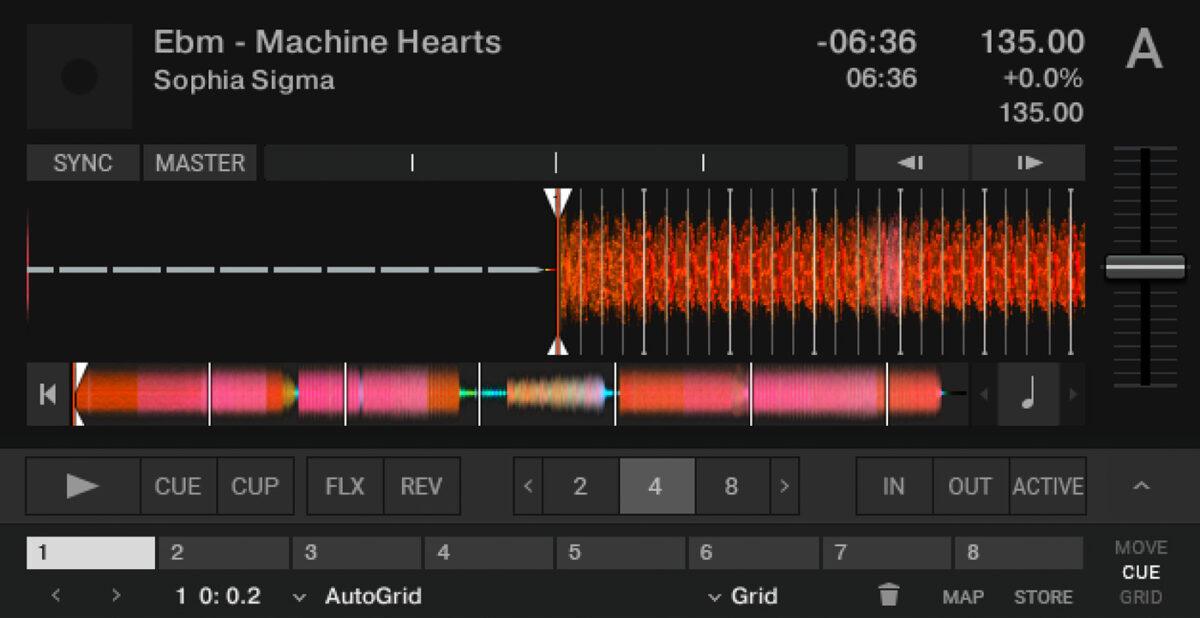
Cue points can be mapped to a keyboard, or MIDI controller. If you use a DJ controller, cue points are automatically assigned to a button on the controller. To create a cue point using Traktor, a DJ needs to move the track to a specific point in the song, and then press one of the cue buttons. When the cue button is pressed again, the track will go to the marked location. Using cue points allows a DJ to jump through the track quickly and begin playing the track from different parts in the song.
Learn even more tips for how to DJ with Traktor, as well as what equipment you need for DJing.
How to use and set cue points in DJing
1. Select key moments
The most widespread use of cue points is for quick navigation to different points in a track. For example, a DJ may want to mark a cue point at the beginning of the track (if not already marked automatically), at the beginning of the verse, at the beginning and end of the drop or chorus, at the beginning of the second drop or chorus, and at the start of the outro.
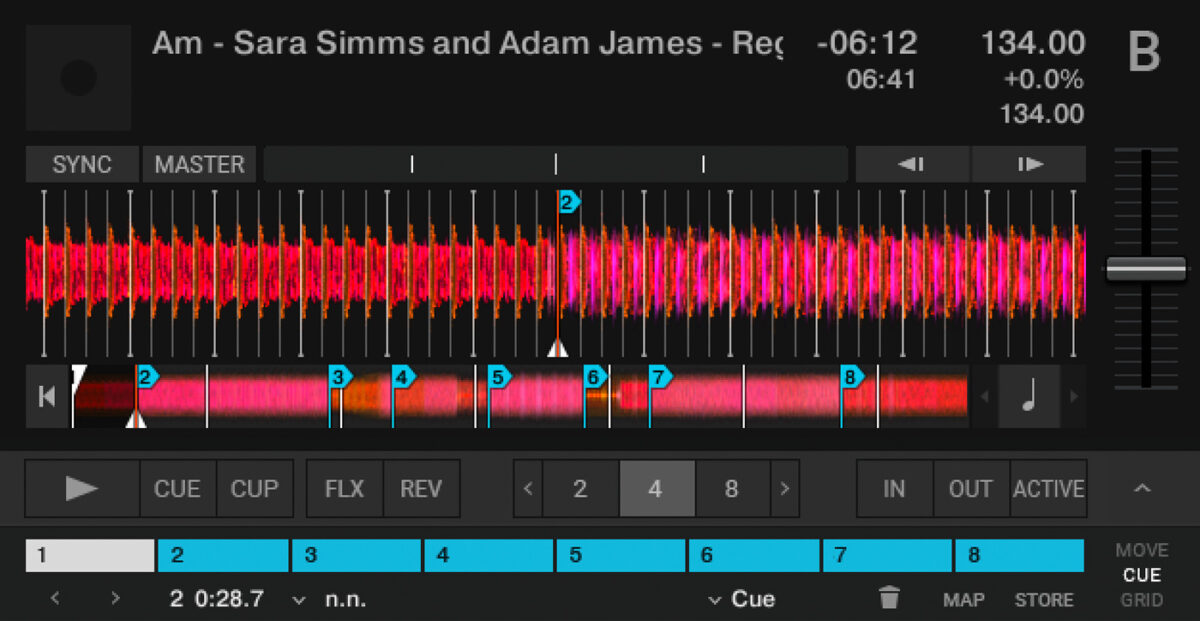
These cue points can be useful to swiftly move to different points in the track to learn their harmonic and melodic content. To learn more about song structure, check out our guide.

Cue points help to give a visual guide when mixing, as you can use Traktor to see exactly when the different parts of the song are coming up. For example, a DJ may put a cue point at the beginning of the outro of a track and use this cue point as a guide for mixing in the next track. Another example is a track may have a long intro, and it may be better to start the mix at the beginning of the verse, or at the drop or chorus. Cue points that are marked at the beginning of the verse or chorus allow a DJ to start the mix at these points, and skip the lengthy intro.
2. Create smooth transitions
A great DJ will know his or her track collection well, and have encyclopedic knowledge of the arrangement structure of each of the tracks in their collection. With the abundance of music that’s readily available, most DJs could use a little extra help to remember the content that’s in each of their songs. Cue points help to remind a DJ of the parts of the song where changes take place, and using this information will help DJs to create better transitions.

Creating smooth transitions is determined by a few factors, including the keys, tempos and melodic content of the tracks. If a DJ is mixing together two tracks with vocals, a good use of cue points would be to place a marker where the vocal begins in the track. The DJ can use these cue points to bring in the next track so that the vocals do not overlap.
Placing cue points can help a DJ to make mix choices. For example, if cue points are placed at the beginning of the verse, drop or chorus, 2nd drop or chorus, or outro, this will give you four places where it would make musical sense to begin a new mix. A DJ may have a track that has a great intro, verse and drop but then a breakdown that they don’t want to play. Setting mix in and mix out points on a track like this allows them to play the parts of the track they want, but cut the track before the breakdown section.
During the heat of a live mix, it may be easy for a DJ to lose themselves in the moment and forget to mix out of the track exactly as planned. The cue point serves as a reminder to mix in the next track at the intended place. It’s worth mentioning that setting cue points does take additional preparation time.
To save time, a program such as Mixed In Key can be used to automatically set cue points and then these cue points can be imported into Traktor.

By using the song structure as a guide for mixing, cue points allow DJs to create better mixes and transitions. The more planning a DJ can put into a set, the easier it will be to play. To learn more about DJing and transitions, check out our guide about how to become a DJ.
3. Looping
Another great use of cue points in Traktor is for marking places in a track to loop. One of the reasons you may want to set a loop is a track may have a short intro or outro that you’d like to extend. In other cases, the track may have an instrumental section that you may want to loop and layer over another track.
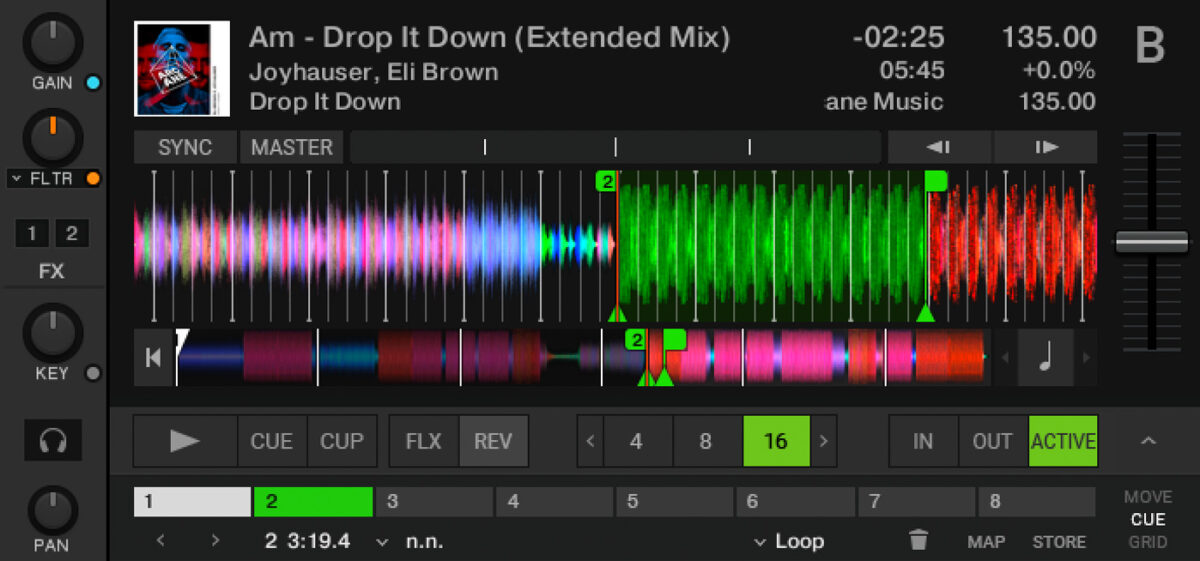
During three or four deck mixing, it’s common to layer multiple short loops together. While it’s possible to mix many loops together on the fly, setting a cue point can help DJs to remember the parts in the track that may work well in a loop. To set a cue point for a loop in Traktor, click on the cue drop down menu (below the eight cue buttons) and then click loop.
4. Samples
A DJ may want to use cue points for samples. This could be a singular sample that they want to play repeatedly for a rhythmic or melodic idea during a set, or scratch in.
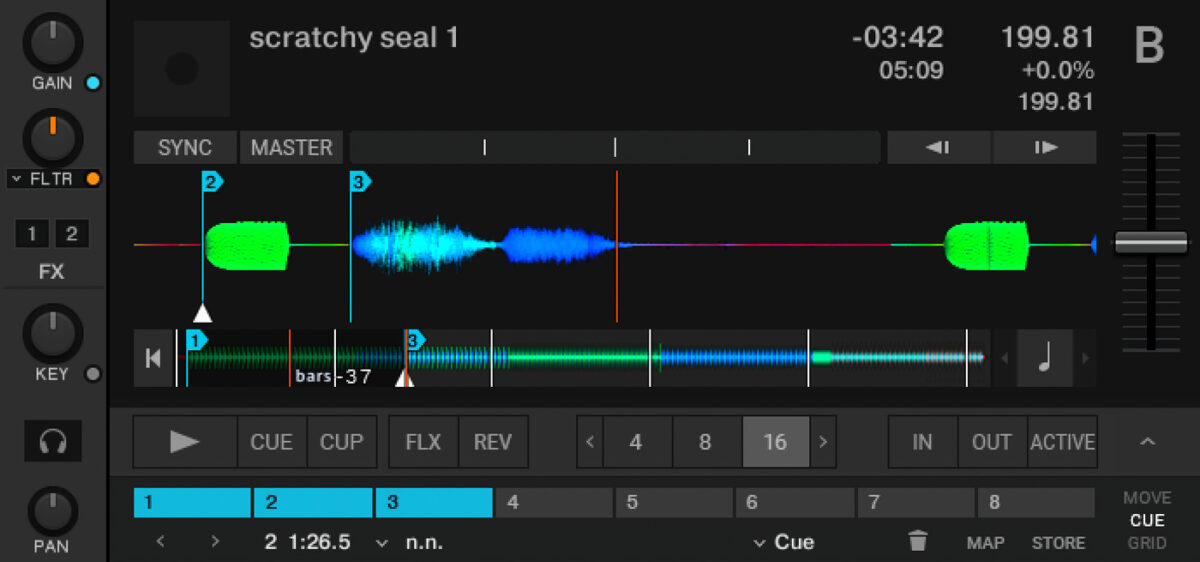
A scratch DJ may have a digitized break record with many scratch samples on it and use cue points to mark their favorite sounds. Using cue points on a break record allows a DJs to jump from one sample to the next quickly.
5. Cue drumming
A technique that’s gaining popularity in the DJ world is cue drumming. This is the art of using a sample, setting a cue point and using a cue button on a DJ controller or Pioneer DJ CDJ to rhythmically drum the sample. The cue drumming technique can be combined with changes to the pitch fader to change the pitch of the sample in real time.
While this technique has been in the DJ community for some time, DJs like DJ EZ, James Hype and others have been incorporating it into their new mixes.
Try out cue drumming using a DJ controller or the new Traktor X1 MK3 for yourself and see what ideas you can create!
6. Creating routines or mashups
DJs who create performance videos, mashups or routines for battles or videos will all benefit from using cue points. Setting cue points on your tracks allow DJs to execute complicated mixes and quickly move from one point in a track to another. It’s common during routines to rapidly switch between two or more tracks, and cue points will help a DJ cut or mix swiftly from one part of a song to a different part of another.
7. Improvising
Setting cue points during preparation will allow DJs to improvise effectively during sets. A DJ can mark mix in and mix out points on each track, which gives them a map of their tracks for transitions. Having a working knowledge of track structure defined by the cue points will give a DJ creative freedom to take more risks with their sets, and mix together different combinations of tracks.
Start setting cue points in your DJ sets
Now that you know what cue points are, it’s time to start using them during your set preparation and performances. During prep for your next DJ set, take the time to set cue points on each track. The cue points will prove to be very useful, whether you’re creating polished transitions or cutting between tracks.
You’ll be inspired by how easily your mixes will flow together once cue points are mapped out on each of your tracks. Start experimenting with these cue point techniques, and listen to how your mixes improve!















